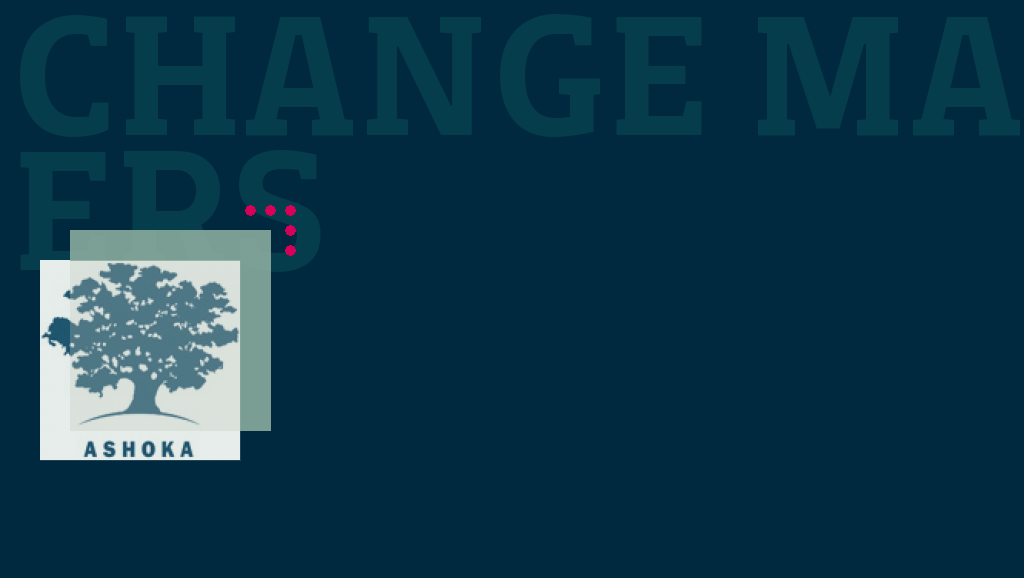If you go on the web to www.changemakers.com you will find the website for Changemakers, a program of the Ashoka Society.
The Ashoka Society is one of the most remarkable and effective change-agent non-profit organizations on this planet. It was founded three decades ago by my lifelong friend and colleague Bill Drayton. Ashoka supports social entrepreneurs around the world who are trying to change systems that don’t work for people, particularly the poor, into systems that allow people, particularly the poor, to advance and help themselves. Through the Changemakers programs Ashoka aims to harness public energy and insight to identify, rank and improve innovative proposals to remove market barriers to promising new approaches and to help their proponents bring them to scale.
What does all this have to do with the larger, more conventional phenonema of scientific and commercial innovation – the field that the Fondazione Bassetti has done so much to illuminate?
On the Changemakers site, if you click through to Competitions, you will find a series of global competitions seeking proposals to “change” or “improve” a particular system, or approach a specific problem, sponsored usually by a corporation or non-profit agency. Click, for example, on “Ending Global Slavery.” There you will find innovative proposals by social entrepreneurs for eliminating sex traffic with children. (See, for example, the competition entry called “Empowering the Travel Industry to Prevent Child Sex Tourism”.)
The Changemakers competition solicits – in an open electronic framework – proposals around a specific issue, and then invites other practitioners around the world to comment on their merit, to suggest improvements, and to vote for those they find most worthy. The results of this open process contribute to the process by which the winners are chosen.
Let’s resume the elements here: proposals for change are described openly with the proponent identified; comments are sought and received from others around the world familiar with the issues involved – and, of course, by some who are not so familiar; and then a process that makes a judgment on which approaches make sense based in part on the range of insights and comments offered electronically from around the world. In the case of a Changemaker competition, prizes (usually financial support) are awarded by the sponsor to the winning proposals. And everybody gets to watch what’s going on as it happens.
Is there any reason a similar process would not be healthy for the consideration more generally of proposals for innovation – particularly in those cases where the innovation involves a major change with potentially far-reaching impacts? Or where the innovation involves a leap into a new domain or area altogether? Why should the proponent of an innovation who wishes to proceed responsibly, which among other things means with careful regard for, examination of, and assessment of the impact of, potential consequences, not be willing to describe the innovation and its anticipated consequences publicly on the web? Why would the proponent – whether a corporation, a laboratory, a university, or a political jurisdiction not be willing to see what others said about the responsibility of the innovation, and see how others reacted to the proponent’s description of the risks and consequences? What might it tell us if the proponent of a new innovation was not willing to go through such a process? Supposed we lived in a world where most universities, governmental bodies, corporations and non-profits required their staffs to go through such a procedure? Why shouldn’t regulatory bodies, such as the Food and Drug Administration of the U.S. Government, employ such a system for all proposals for approval of new drugs and medical interventions?
I presume from this short summary that the general idea is clear. It would have to be understood that the proponent was not required to disclose intellectual property of significant value, or other marketing or trade information that was legitimately proprietary. Were such a system in place, it would not be long before it became quite difficult to avoid. For instance, legislatures might establish judicial consequences for a party that had not gone through such a process; certainly over time liability insurance rates for products that had not been through such a process would be expected to show a differential with those that had.
There is of course an easy way to test such an idea. That is to find a small, “closed” universe, such as the department of a university, that was willing to pioneer the idea – and to try the idea out on an experimental basis as an innovation in itself.
















